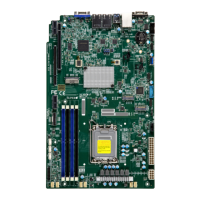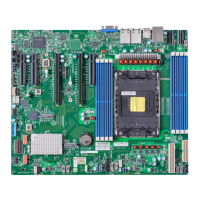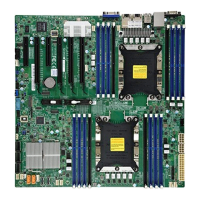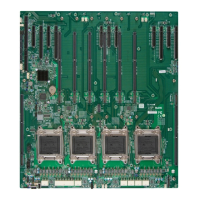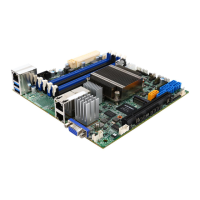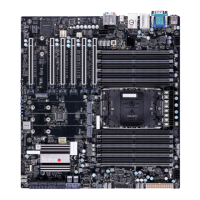
Do you have a question about the Supermicro X13SWA-TF and is the answer not in the manual?
| Brand | Supermicro |
|---|---|
| Model | X13SWA-TF |
| Category | Motherboard |
| Language | English |
Lists main parts included with the motherboard for system integration.
Details the Intel Xeon processors and Intel W790 chipset functionality.
Explains system behavior after AC power loss and default settings.
Describes onboard voltage and fan status monitoring for system health.
Explains Advanced Configuration and Power Interface for power management.
Details ATX power connector requirements and recommendations for stable operation.
Describes serial communication connection via COM1 port and UART speeds.
Provides precautions to prevent Electrostatic Discharge (ESD) damage to components.
Guides on installing the Intel Xeon processor and its heatsink module correctly.
Details steps for installing the motherboard into a chassis, including tools and mounting holes.
Covers DDR5 memory support, population tables, and installation/removal procedures.
Explains the installation process for M.2 devices and optional M.2 heatsink.
Identifies and describes the various I/O ports on the motherboard's rear panel.
Details header pins for chassis buttons and indicators like Power, Reset, and LEDs.
Describes power connections, including ATX and 8-pin power connectors for adequate system power.
Explains how jumpers modify motherboard operations and details CMOS clear procedure.
Explains the meaning of various LEDs on the motherboard, including LAN and status LEDs.
Provides systematic steps for diagnosing and resolving system issues like no power or no video.
Outlines steps for contacting technical support, including required information.
Answers common user questions regarding memory support and BIOS updates.
Guides on safely removing and installing the onboard battery, including proper disposal.
Explains the process for obtaining warranty service and returning products.
Introduces the AMIBIOS Setup utility and navigation methods for BIOS configuration.
Details the main BIOS setup screen, including system date/time, BIOS version, and memory info.
Guides on configuring advanced BIOS settings for boot features, power, and CPU.
Explains how to configure SMBIOS event log settings and view system events.
Covers BMC firmware revision, IPMI status, and System Event Log configuration.
Details BIOS security settings, including administrator/user passwords and HDD security.
Guides on configuring boot settings, priorities, and adding/deleting boot options.
Explains how to save BIOS changes, restore defaults, and exit the setup utility.
Provides information and links for BIOS POST codes used in troubleshooting.
Guides on installing the OS, configuring RAID, and loading drivers during setup.
Explains how to download and install system drivers and utilities from the Supermicro website.
Introduces SuperDoctor 5 for system health monitoring and management.
Explains Intelligent Platform Management Interface (IPMI) for remote access and management.
Guides on accessing the BMC for system management and security.
Provides critical warnings regarding battery replacement and disposal to prevent explosion hazards.
Offers guidance on the proper disposal of the product according to national laws and regulations.
Explains the Unified Extensible Firmware Interface (UEFI) and its role in system boot.
Details the components of a UEFI BIOS flash chip and the recovery process.
Provides step-by-step instructions for recovering the main BIOS using a USB device.

